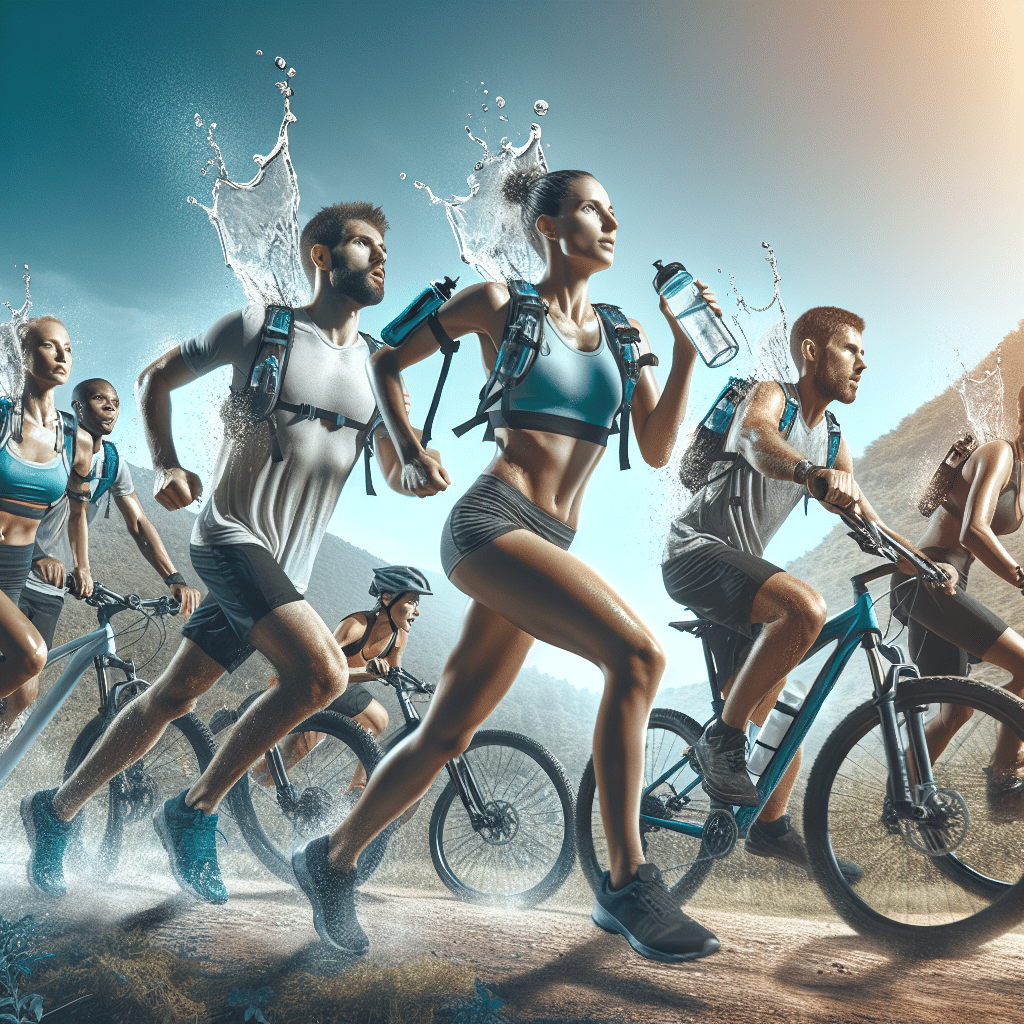Understanding Hydration Needs
Hydration is vital for both runners and cyclists, affecting performance, recovery, and overall health. The Human body is composed of approximately 60% water. As you exercise, you lose fluids through sweat and breathing, which can lead to dehydration if not adequately replenished.
How Much Fluid Do You Need?
The general recommendation is to drink at least 8-10 cups (2-2.5 liters) of water a day. However, this varies depending on factors such as body weight, intensity of activity, weather conditions, and duration of your workout. A useful rule is to drink 0.5-1 liter of water for every hour of exercise.
Use the following method to tailor your hydration needs:
- Pre-Exercise: Weigh yourself before starting. This will give you a baseline of how much fluid you need.
- Post-Exercise: Weigh yourself again afterward. Each pound lost during your workout represents about 16 ounces (0.5 liters) of fluid that needs to be replaced.
Signs of Dehydration
Recognizing the signs of dehydration can be crucial for athletes:
- Thirst: A primary indicator but can be misleading, as you may already be dehydrated when feeling thirsty.
- Dark Urine: Your urine should be pale yellow, signaling proper hydration. Dark yellow or amber can indicate dehydration.
- Fatigue: Dehydration often leads to tiredness, weakness, or dizziness.
- Headaches: A common symptom caused by fluid imbalance.
- Cramps: Muscular spasms may occur when electrolytes are out of balance.
Hydration Strategies for Runners
Pre-Run Hydration
- Water Intake: Aim to drink about 500-700 mL of water 2-3 hours before running. This allows time for your body to absorb the fluids.
- Electrolyte Beverages: Consider a balanced electrolyte drink if your running intensifies or lasts more than an hour.
Hydration During the Run
- Frequency: If your run exceeds 45 minutes, take small sips of water every 15-20 minutes to maintain hydration levels.
- Energy Gels and Drinks: For runs longer than an hour, opt for sports drinks or gels containing carbohydrates and electrolytes. This dual action will maintain energy levels and hydration.
Post-Run Recovery
- Replenish Immediately: Rehydrate within 30 minutes after your run. Combine water with electrolytes for optimal recovery.
- Include Foods with High Water Content: Foods such as fruits (watermelon, oranges) and vegetables (cucumbers, lettuce) can help restore hydration levels.
Hydration Strategies for Cyclists
Pre-Ride Hydration
- Hydrate in Advance: Similar to runners, consume around 500-700 mL at least two hours before your ride.
- Caffeine Consideration: If you enjoy caffeinated beverages, moderate consumption can enhance performance, but remember that caffeine can also dehydrate.
Hydration During the Ride
- Water Bottle System: Use two water bottles on your bike, one filled with water and another with an electrolyte drink. Sipping alternately can optimize hydration and energy levels.
- Frequency: Aim to drink about 150-250 mL every 15-20 minutes to maintain hydration and energy balance.
Post-Ride Recovery
- Hydrate Within 30 Minutes: A combination of water and an electrolyte-rich beverage can expedite recovery and rehydration.
- Balanced Recovery Meal: Incorporate a well-rounded meal featuring both protein and carbohydrates to aid recovery alongside hydration.
Choosing the Right Sports Drink
When selecting a sports drink, consider the following:
- Electrolyte Content: Look for electrolytes like sodium, potassium, magnesium, and calcium. They help replenish what you lose through sweat.
- Sugar Levels: Opt for drinks with low sugar content unless you are engaging in intense exercise for over an hour. High sugar can lead to gastrointestinal distress while exercising.
- Flavoring: Choose a flavor you enjoy so that you will be more inclined to hydrate during your workouts.
Seasonal Considerations
Hydration needs can shift with changes in the seasons:
- Summer: Increased sweat loss requires greater fluid intake. Carbonated beverages may not be the best choice as they can lead to bloating, so stick to flat drinks.
- Winter: You may not feel as thirsty due to cooler temperatures, but hydration remains important. Monitor your sweat loss and drink regularly even if you don’t feel thirsty.
Hydration Tips for Different Conditions
- Hot and Humid Weather: Increase intake and consider wearing moisture-wicking fabrics to manage sweat.
- Cold Weather: Hydration levels are still crucial. The cold can mask your effort, so avoid neglecting your fluid intake.
- Altitude Training: The air is drier, and hydration needs increase due to increased respiration. Drink water regularly even if you don’t feel thirsty.
The Role of Electrolytes
Electrolytes, such as sodium and potassium, play a key role in maintaining fluid balance, nerve function, and muscle contractions. If you’re sweating heavily, especially beyond an hour, an electrolyte beverage can help:
- When to Use: During long runs or rides, and in intense heat.
- Alternative Sources: Natural sources like coconut water and pickles can also replenish electrolytes without the added sugars from commercial sports drinks.
Hydration Equipment
Consider investing in hydration-related tools to enhance your hydration strategy:
- Hydration Packs: Ideal for long-distance cycling or running. They distribute weight evenly and allow for hands-free drinking.
- Smart Water Bottles: Some bottles track your intake and remind you to hydrate.
- Water Purifiers: For long trails or adventures, portable water filters can ensure safe hydration from natural sources.
Customizing Your Hydration Plan
Create a personalized hydration plan for training sessions and races:
- Trial and Error: Test different hydration strategies during training to figure out what works best for your body.
- Document: Keep track of your fluid intake and performance levels to identify which hydration strategy yields optimal results.
By ensuring you are consistently hydrated, you can significantly enhance your performance as a runner or cyclist, mitigate the risks of dehydration, and optimize your recovery processes. Stay informed, plan ahead, and let hydration support you in reaching your fitness goals.
